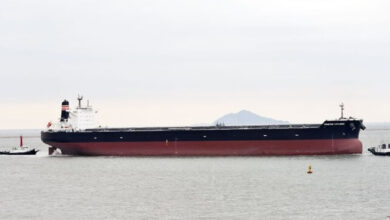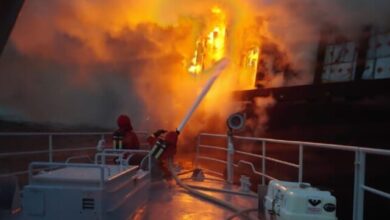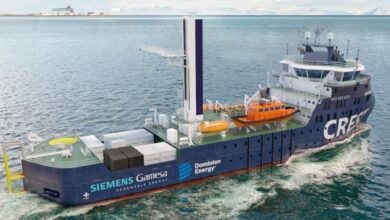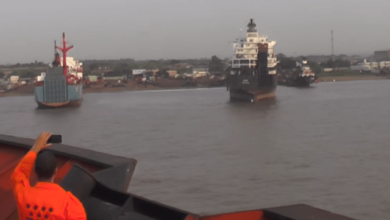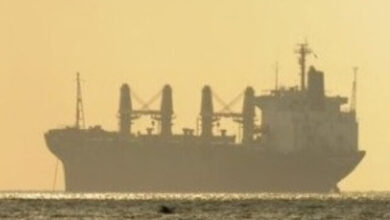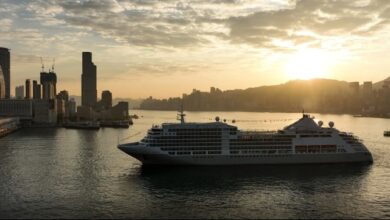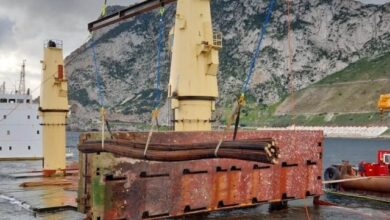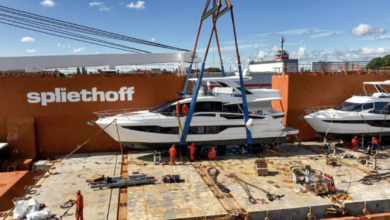Marek Grzybowski write : Anew wave of the industrial revolution in the blue economy
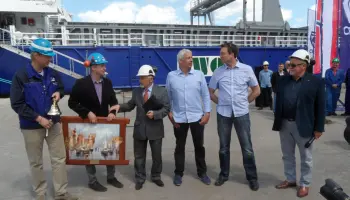
Introduction to Practical aspects of Artificial Intelligence in Maritime Industry 4.0 – Sea Ports & Maritime Transport & Shipyards
Marek Grzybowski
In the 21st century, we are witnessing a new wave of the industrial revolution in the blue economy. It includes maritime transport and shipbuilding, ports and logistics, tourism and food production, energy production from offshore wind farms and offshore industry, extraction of mineral resources from the ocean floor.
Maritime 4.0
The following were in common use: Maritime 4.0, Port 4.0, Logistics 4.0, Shipbuilding 4.0, Shipping 4.0, Shipyard 4.0. Artificial intelligence is one of the important components of Maritime Industry 4.0. The maritime industry produces huge amounts of data. The global cloud integration of AI and the Internet of Things (IoT) also offers the potential of a more connected intelligence.

(Maritime Autonomous Surface Ships (MASS)
Eight leading maritime countries have created a new network that will support the preparation of ports for handling autonomous ships. The new agreement was called MASSPorts because it concerns the operation of Maritime Autonomous Surface Ships (MASS). Representatives from China, Denmark, Finland, Japan, the Netherlands, Norway, the Republic of Korea, and Singapore were convened during a network meeting for the launch of the event on 4 August.
The International Maritime Organization (IMO), International Association of Marine Aids to Navigation and Lighthouse Authorities (IALA), as well as International Association of Ports and Harbors (IAPH) also joined MASSPorts initiative.
Unmanned vessels in ports
The operation of fully unmanned vessels in ports is still not legally possible. In addition, to handle such ships, appropriate infrastructure is necessary, for example, allowing for automatic mooring. Ports must have adequate infrastructure to ensure safe sailing. These are not the only challenges. The initiators of the MASSPorts network highlighted the need to develop standards for autonomous units and wharfs where these ships will moor and electric ships will charge their batteries. It is also necessary to establish a common terminology so that technical, legal and organizational solutions guarantee full ship safety in ports.
Sea Port
These problems were widely discussed by the members of the Baltic Sea and Space Cluster during the scientific conference “Sea Port + Space Infrastructure. Synergic Network Under Common Management” in 2018. The results and conclusions of the research can be found in the book Per Mare ad Astra. Space Technology, Governance, and Law.
It discusses technical, organizational, and legal aspects related to the integration of knowledge in the field of marine and space technologies. The book was published by the Polish Academy of Sciences, Gdańsk Branch.

Autonomous navigation
“Autonomous navigation is an important part of our plans to be a future-ready port. We see MASS having the potential to enhance navigational safety and increase productivity” said Quah Ley Hoon, Chief Executive of the Maritime and Port Authority of Singapore. Network participants will focus on developing detailed guidelines and conditions for the operation of autonomous ships in ports. Port operations are to take place under the IMO Interim MASS Test Guidelines. The problem is to coordinate the movement of manned and unmanned ships. This problem was checked at the Port of Gdynia in 2019. We would like to remind you that attempts to operate unmanned vessels have already been successfully carried out at the Port of Gdynia.
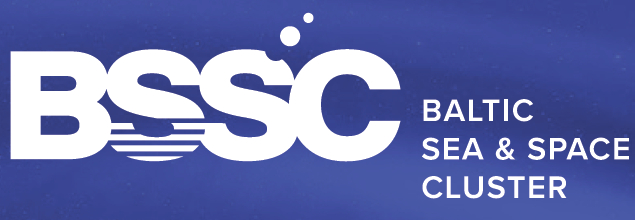
Baltic Sea & Space Cluster
Two members of the Baltic Sea and Space Cluster: Marine Technology and Centrum Techniki Okrętowej (Maritime Advanced Research Centre) presented their vessels on the waters of the port of Gdynia last year. It was the first maneuver of two unmanned units without interrupting handling and vessel traffic in the port in the world.
Maritime Industry 4.0 is a consequence of the development of Industry 4.0. It caused a dynamic demand for solutions and the use of artificial intelligence. Globalization and internationalization resulted in the dynamic development of the maritime industry.
Global changes in the industry also influenced the development of Maritime Industry 4.0. Automation, Digitization and Internet of the Things are the main areas of application of artificial intelligence in maritime 4.0. In Shipbuilding 4.0 „artificial intelligence (AI) can be highlighted as a support to the other technologies, such as vertical integration of naval production systems (e.g., connectivity, Internet of things, collaborative robotics, etc.), horizontal integration of value networks (e.g., cybersecurity, diversification, etc.), and life cycle reengineering (e.g., drones, 3D printing (3DP), virtual and augmented reality, remote sensing networks, robotics, etc. (More: 2020, Alejandro Sánchez-Sotano and others: Trends of Digital Transformation in the Shipbuilding Sector, in: New Trends in the Use of Artificial Intelligence for the Industry 4.0).
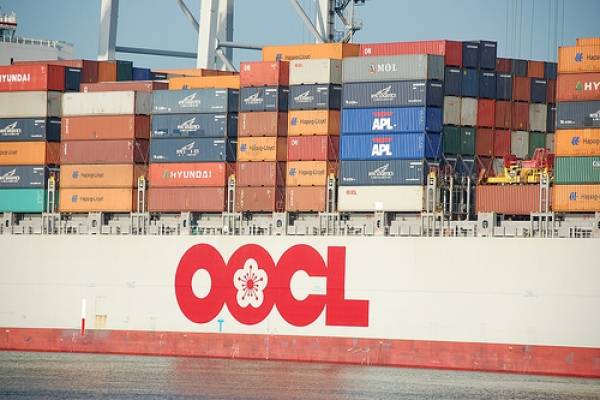
OOCL processes
AI Shipping. Microsoft Research Asia (MSRA), Microsoft’s world-class research arm, and Orient Overseas Container Line Limited (OOCL) announced their partnership in applying Artificial Intelligence (AI) research to improve network operations and achieve efficiencies within the shipping industry (OOCL press info).
OOCL processes and analyzes over 30 million vessel data every month. By leveraging AI technology and machine learning, the company develops predictive analytics on vessel schedules and berth activities. “With MSRA’s efforts and expertise, we expect to save around USD10 million in operation costs annually by applying the AI research and techniques for optimizing shipping network operations from our most recent 15-week engagement” said Steve Siu, Chief Information Officer of OOCL.
Maersk has invested in New York-based freight-booking artificial intelligence (AI) start-up Loadsmart as it looks to diversify its operations away from purely maritime transportation. Through its automated platform, shippers can book a truck in seconds, as well as reduce their spot exposure by 50% and procurement execution by 90% (https://balticcluster.pl/?page_id=7919).
Human intensive
AI in the Port 4.0. Over the centuries, ports have evolved in the field of cargo handling, storage and logistics. Port 1.0 is characterized by human intensive use in all port operations. They use cranes, wheelbarrows and other tools for reloading. Port 2.0 uses process management (transhipment, storage, distribution, production, packaging). Port 3.0 is an enrichment of Port 2.0 with automated hardware. Processes are optimized by algorithms. People perform non-standard operations (reloading, project cargo logistics), maneuvering large ships, handling passenger ships.

Port 4.0 model
This is management by exception. In the Port 4.0 model (“from manage to orchestrate”) AI palys important role. „Future port will enlarge their role by orchestrating physical and information flows inside and outside terminals to enhance the port ecosystem’s broader, systemwide efficiency. Forward-looking ports will push toward this next horizon, beyond automation, in the coming Port 4.0 era. Every player—terminal operators, trucking companies, railroads, shippers, logistics companies, and freight forwarders—will be connected to optimize not just the port itself but also its entire ecosystem” (More: 2018, Fox Chu and others: The future of automated ports, https://www.mckinsey.com/industries/).
The above mentioned AI led port operations and management are still on the way of technical development and institutional arrangement. Kenji Ono and others write that „major challenges however may include: 1) smooth introduction of the newest sensor technologies for efficiently and effectively collecting all terminal operation related information as digitalized data, 2) materializing an accurate big data transmission between on-site sensors and the terminal control host computer through IoT channels, 3) developing man-machine interface for assisting operator’s prompt decision making, 4) renovating current terminal operating system by employing AI based architecture, and 5) introducing appropriate countermeasures against computer virus and hacking (More: 2020, Kenji Ono and others: AI Port Initiatives – Possible Modernization Of Port Operation And Management Through Cutting Edge ICTs).




